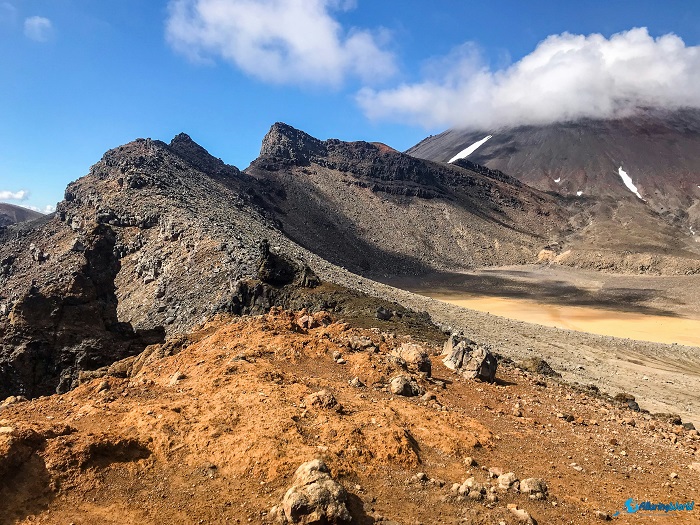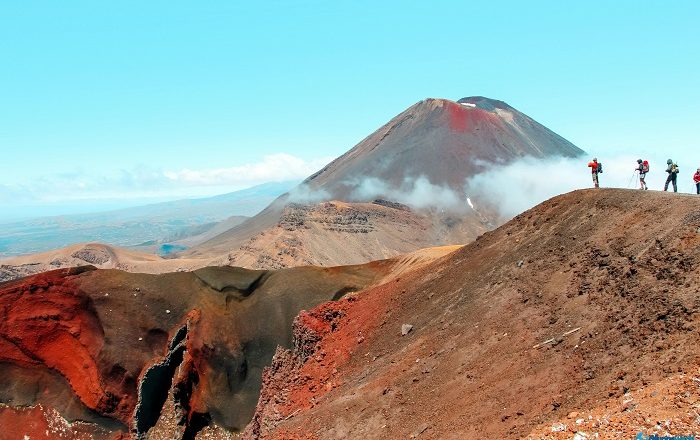The Tongariro National Park is a significant national park known as the sixth oldest national park in the world and also the oldest one located in the heart of the Ruapehu District, which is part of the Manawatū-Whanganui Region in the heart of New Zealand’s North Island. Known for its striking volcanic peaks, sacred Māori heritage, and world-famous hiking trails, this amazing park is a place where natural beauty and deep cultural meaning can coexist harmoniously. Covering an impressive 796 km² (307 mi²), Tongariro National Park is not only New Zealand’s oldest national park but also a UNESCO World Heritage Site recognized for both its cultural and natural importance. It is a land of dramatic contrasts: snow-capped summits, active craters, emerald-colored lakes, alpine meadows, and ancient lava flows come together to form a landscape that feels timeless and otherworldly.
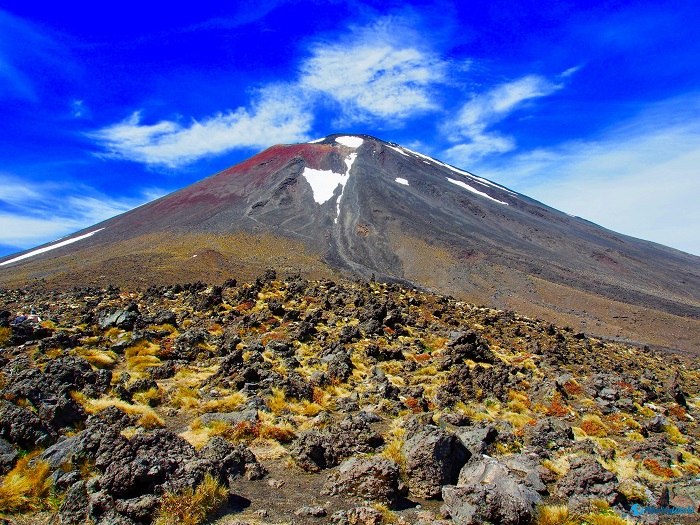
Established in 1887, Tongariro National Park was gifted to the New Zealand government by the Māori chief Horonuku Te Heuheu Tukino IV, also known as Ngāti Tūwharetoa, to ensure its protection. This generous act marked the beginning of the national park movement in New Zealand, and it was at that time the fourth such initiative in the world. It should be noted that the chief’s decision was a great gesture of preservation that also had a profound cultural statement, because the mountains were considered sacred ancestors to his people. By entrusting them to the nation, he ensured their spiritual and physical protection for generations to come.
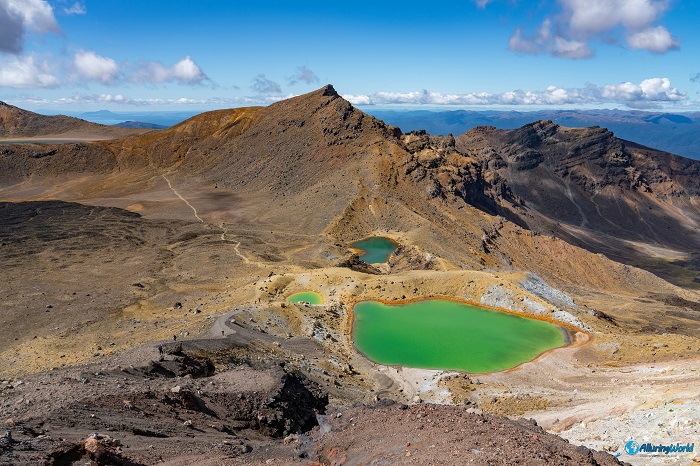
The park’s centerpiece is its trio of awe-inspiring volcanoes: Tongariro, Ngauruhoe, and Ruapehu. These peaks form part of the Taupō Volcanic Zone, one of the most active geothermal regions on Earth. Mount Ruapehu, with a height of 2,797 m (9,177 ft), is the highest mountain that can be found in the North Island and home to Whakapapa and Turoa, two of New Zealand’s premier ski fields. Its summit features a stunning crater lake that periodically changes color depending on volcanic activity. Mount Ngauruhoe, another giant with a height of 2,291 m (7,516 ft), gained international fame as the cinematic Mount Doom in The Lord of the Rings films, with its near-perfect conical shape and dramatic slopes. Finally, Mount Tongariro, after which the park gets its name, standing at 1,978 m (6,490 ft), is the oldest of the three and holds deep spiritual significance for Māori, who consider it a sacred embodiment of their ancestors.
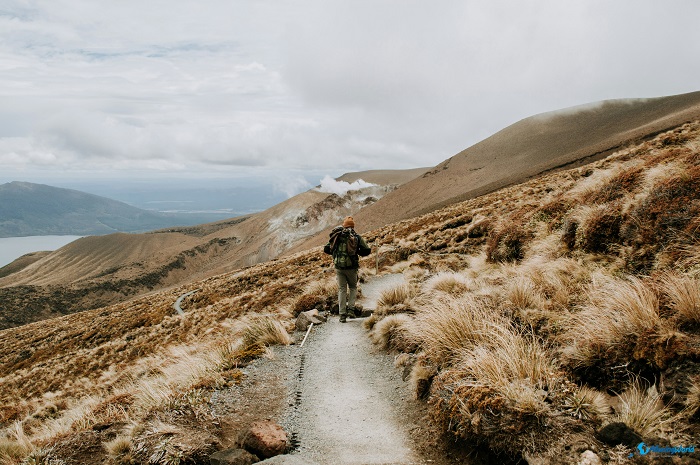
Tongariro’s volcanic history stretches back hundreds of thousands of years, and eruptions have shaped not only the terrain but also the mythology of the land. According to the local Māori legend, the mountains were once warrior gods who engaged in fierce battles for the love of the beautiful mountain Pīhanga, whose peak lies to the north of Tongariro. After the battle was concluded, Tongariro was the only one left standing victorious, surrounded by the vanquished peaks, a story that mirrors the region’s dramatic topography and spiritual depth.
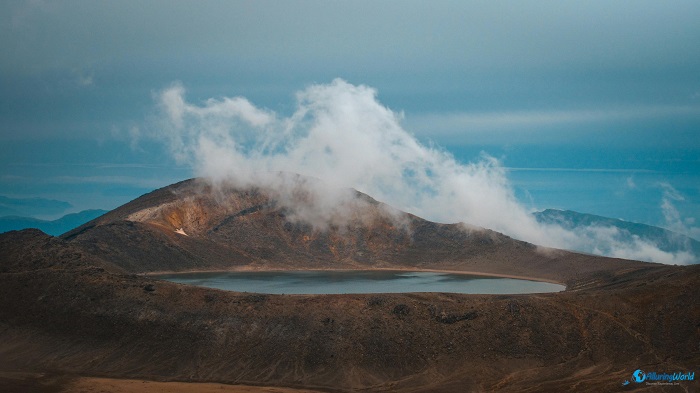
The climate in Tongariro National Park is as diverse as its landscape. Due to its elevation and, in particular, its geographical position, the park experiences unpredictable weather patterns, with sudden changes in temperature, wind, and precipitation. Summers that are from December to February in New Zealand offer mild to warm conditions, ideal for hiking and outdoor exploration, while winters (June to August) bring snow to the higher elevations, transforming the park into a wonderland for skiing and snowboarding. Average summer temperatures range from 10°C to 20°C (50°F to 68°F), while winter temperatures can drop below freezing, especially on the mountain slopes. Visitors are always advised to be prepared for rapid weather shifts regardless of the season.
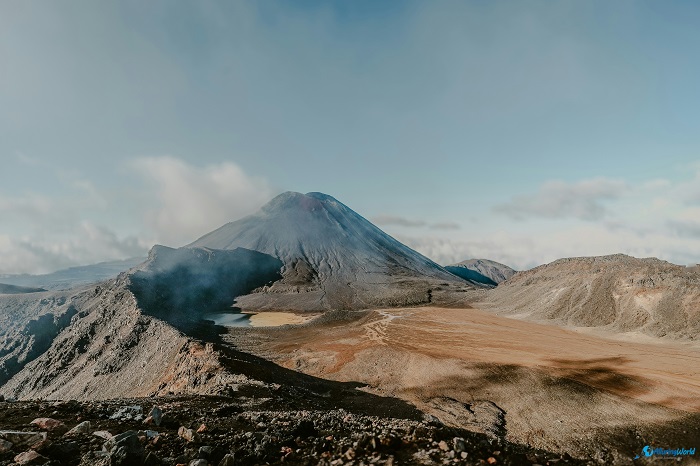
One of the most popular experiences within the park is the Tongariro Alpine Crossing, a 19.4 km (12 mi) trail often hailed as one of the best one-day hikes in the world. The trek takes hikers through an awe-inspiring volcanic landscape that feels almost lunar. The journey begins at Mangatepopo Valley and ascends steeply up the Devil’s Staircase toward the South Crater, continuing across rugged terrain to reach the Red Crater, the highest point of the crossing at 1,886 m (6,188 ft). From there, the trail descends past the vivid Emerald Lakes and the larger Blue Lake, both filled with minerals that give them their surreal coloration. The descent through alpine vegetation into native forest completes the trek, offering a full spectrum of New Zealand’s geological and ecological diversity.
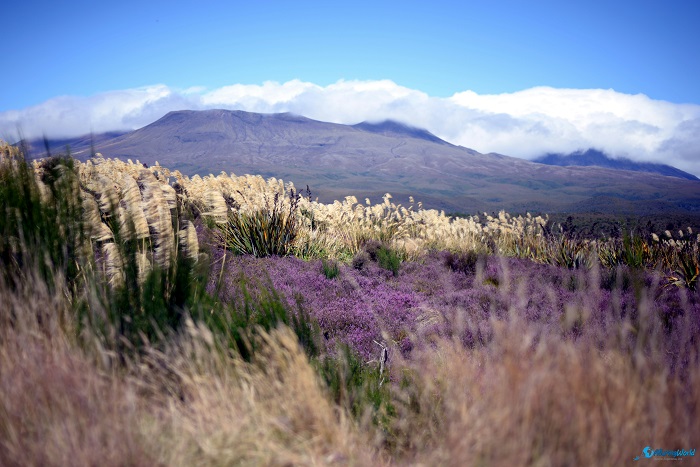
For those who wish to experience more than just a single-day hike, the Tongariro Northern Circuit, one of New Zealand’s Great Walks, provides a multi-day adventure encircling Mount Ngauruhoe. This 43.1 km (26.8 mi) loop trail takes between three and four days to complete and offers incredible panoramic views, volcanic formations, and a deeper connection with the landscape. Department of Conservation (DOC) huts are available along the route for overnight stays, offering basic facilities for trekkers.
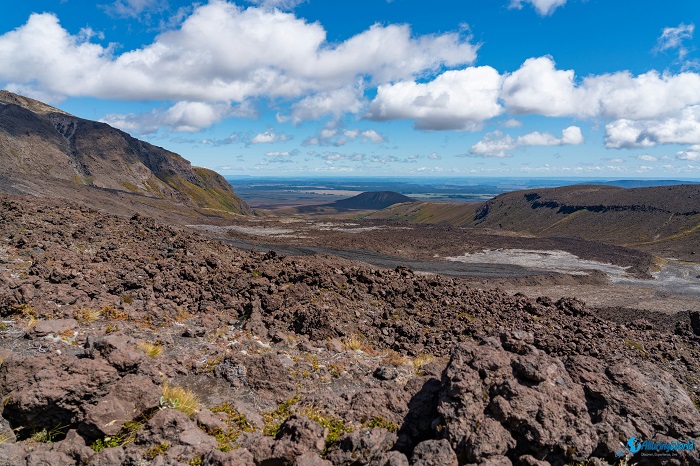
Beyond hiking, Tongariro National Park offers an abundance of outdoor activities throughout the year. In winter, Mount Ruapehu becomes the focal point for snow sports enthusiasts, with Whakapapa Ski Area accessible via Bruce Road and offering slopes for all levels. Turoa, located on the southern side of the mountain, boasts the largest vertical drop in New Zealand at 722 m (2,369 ft). During summer, mountain biking, rock climbing, trout fishing, and scenic flights attract adventurers from around the world. For those seeking relaxation, the nearby town of Ohakune serves as a gateway to the park and features cozy lodges, local eateries, and warm hospitality.
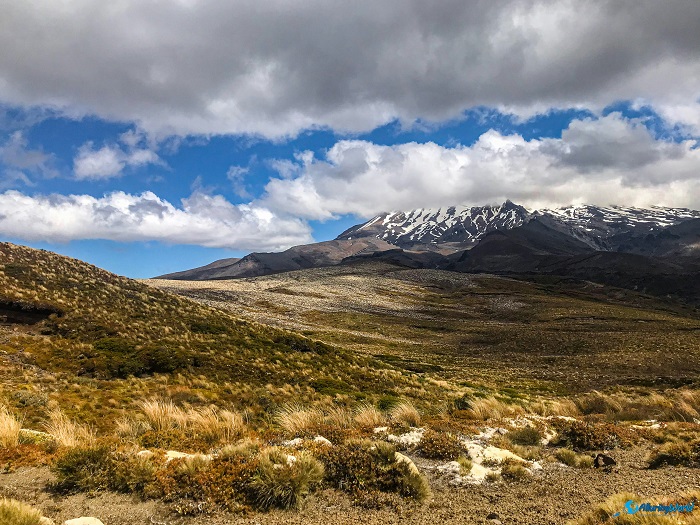
The flora and fauna of Tongariro National Park are as rich and varied as its geology. The lower regions are cloaked in lush beech forests and alpine shrubs, giving way to tussock grasslands and sparse vegetation closer to the volcanic summits. Endemic plant species like mountain daisy and buttercup thrive in the alpine conditions, while birdlife includes native species such as the North Island robin, fantail, tomtit, and the endangered blue duck, known as whio. The combination of volcanic terrain and temperate rainforest ecosystems makes the park a biological treasure, constantly studied by scientists for its resilience and adaptation to extreme environments.
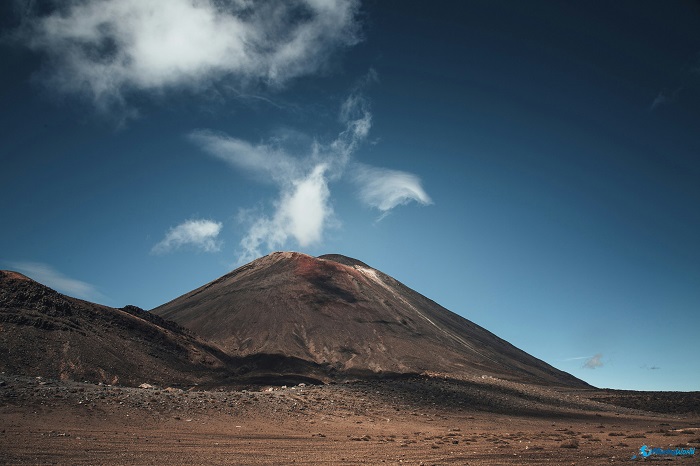
Culturally, Tongariro National Park remains deeply intertwined with Māori traditions and beliefs. Many areas within the park are considered tapu, or sacred, and visitors are encouraged to show respect by not climbing certain peaks or entering restricted zones. The dual World Heritage status, granted by UNESCO in 1990 and 1993, reflects both the natural and cultural values of the park, a rare distinction shared by few places in the world. The relationship between the Māori people and the land is one of guardianship (kaitiakitanga), emphasizing stewardship and respect for the environment.
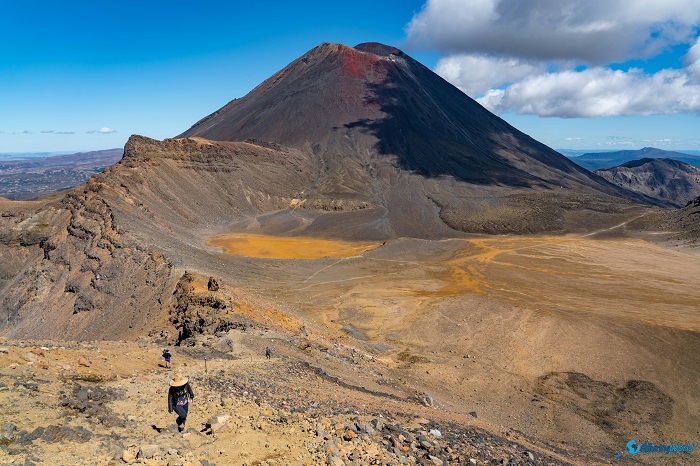
Visiting Tongariro National Park is straightforward, with several access points from nearby towns such as National Park Village, Ohakune, and Turangi. The park is approximately 330 km (205 mi) south of Auckland and about 100 km (62 mi) north of Palmerston North, making it easily reachable by car or bus. The nearest major airport is in Taupō, located about 95 km (59 mi) away. Accommodation options range from budget hostels to luxury lodges, with many offering direct views of the volcanic peaks.
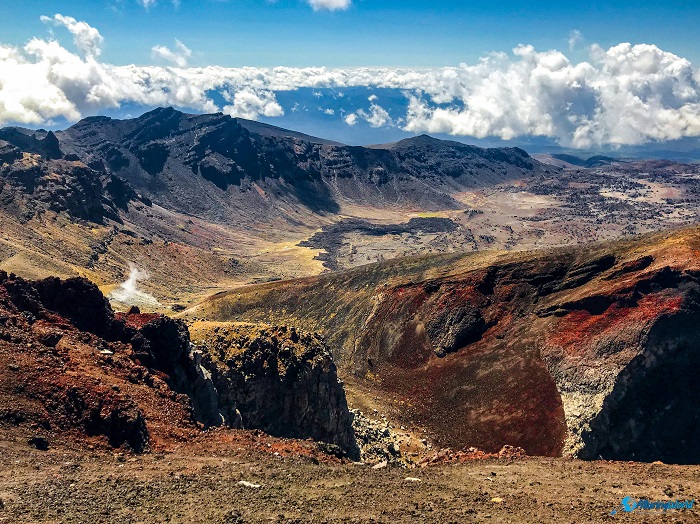
The best time to visit Tongariro National Park depends on one’s interests. For hiking and sightseeing, the months from November to April offer the most stable weather and accessible trails. The winter months, from June to September, are ideal for skiing and snowboarding. However, spring and autumn provide a quieter atmosphere with fewer visitors and stunning natural colors. Regardless of the season, visitors should check weather forecasts and volcanic alerts before setting out, as conditions can change rapidly.
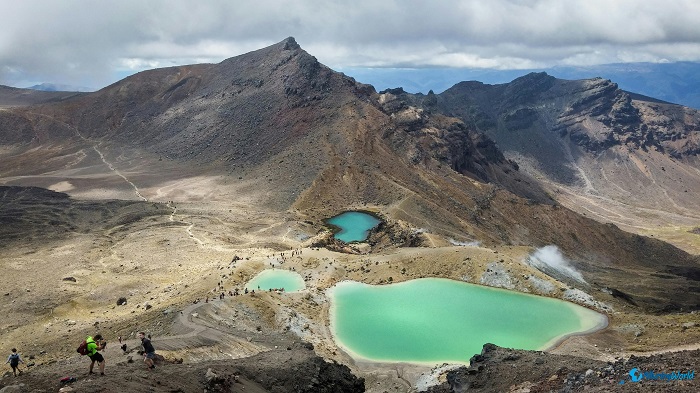
Over the years, Tongariro National Park has become more than just a natural wonder, it stands as a symbol of New Zealand’s deep connection between people and the land. It has inspired countless travelers, photographers, and filmmakers, including those who brought Tolkien’s Middle-earth to life, with Mount Ngauruhoe serving as the fiery Mount Doom. Yet, beyond its cinematic fame, Tongariro continues to be a place of peace, reflection, and renewal, inviting visitors to explore not just its landscapes but also its spirit.
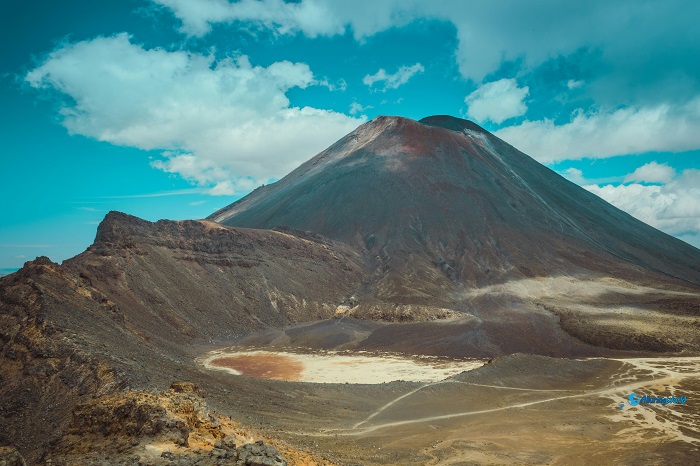
In conclusion, Tongariro National Park is a living masterpiece of nature and culture. Its towering volcanoes, sacred history, and breathtaking scenery make it one of the most captivating destinations on Earth. Whether traversing the iconic Alpine Crossing, skiing down volcanic slopes, or simply standing in awe of its vast horizons, visitors find themselves immersed in a world that feels both ancient and alive. As the land continues to breathe and evolve, it reminds all who visit of the delicate balance between humanity and nature, a lesson as enduring as the mountains themselves.
